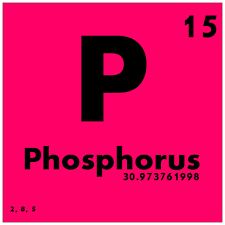Alchemy, considered the embryonic stage of modern chemistry, has led to the discoveries of many basic elements like carbon and iron. But the discovery of the so-called philosopher’s stone was a central motivation for the alchemical field. The distillation of a common yet surprising bodily fluid, urine, led to its discovery in the 1600s.
Alchemists considered the mystical philosopher’s stone to be an elixir that could turn any metal into gold. It embodied alchemical transmutation, which refers to the creation of some substance from the transformation of metal. At this time, alchemists thought it was possible to derive this stone by uniting sulfur and mercury. They did not realize, however, that a source of this magical elixir was incredibly abundant and right under their noses.
Hennig Brandt, a glassblower turned amateur chemist, set out to discover the philosopher’s stone by attempting to extract some form of liquor from urine. In 1675, Brandt effectively extracted a peculiar substance from 5500 L of urine by distillation. The final result was a yellow or black soapy substance that glowed in the dark. This shining substance was even more fascinating to Brandt and interested parties than the initial objective. It was considered to be elemental light and represented figures of biblical significance. Brandt branded it “cold fire.” It would later go by the official name “phosphorus.”
“Phosphorus is an undeniable backbone of society’s greatest discoveries.”
Brandt followed a fairly simple procedure to create this substance. First, he evaporated the urine until it resembled a thick syrup. Then, he added three times as much sand with sufficient water and heated this mixture to the highest degree possible. However, the way in which he prepared the urine apparently affected the final product. In French scientist Homberg’s account of the preparation of phosphorus, he included how fresh urine produces better results than putrefied urine, which is how Brandt prepped his starting material – by letting barrels of urine rot in his cellar. Brandt, unfortunately, was not clued in on this slight advantage and went on to collect and distill one hundred tons of urine from German troops by the word of the Duke of Saxony. The goal was to use a large enough sample of phosphorus to effectively create the philosopher’s stone.
Shortly after Brandt made this incredible discovery, an Englishman conducted a more effective distillation procedure. Robert Boyle also managed to extract phosphorus from urine but got a purer result, obtaining solid phosphorus in contrast to the soapy, impure phosphorus that Brandt had extracted. Boyle was not the only scientist attempting to extract this mysterious form of light from putrid urine, though, and reputable scientists Johann Daniel Krafft, Johann Kunckel, and Gottfried Wilhelm Leibniz all have separate written accounts of their individual discoveries. These accounts discredited the original pioneer, indicated by a debate at the time on who should receive credit for the discovery. This debate was partly due to the community’s view of Brandt as just an amateur scientist.
This concludes the first modern discovery of a chemical element – a first-of-its-kind discovery that meticulously detailed several accounts of discovery methods and displayed concrete scientific thinking. Phosphorus was not legitimized as an element until French chemist Antoine Laurent Lavoisier made his separate discoveries about the nature of chemical substances. Phosphorus is an undeniable backbone of important discoveries. Alchemists have skillfully harnessed its chemical properties to create some of the greatest agricultural fertilizers and pharmaceutical drugs, not to mention that it is the sixth most abundant element in living matter. Despite its good qualities, this elemental substance has drawbacks. For instance, in World War I, phosphorus was used in weaponry as incendiaries, bullets, and chemical weapons. Additionally, the element is currently polluting water through fertilizer runoff. But, in the end, Brandt’s discovery is still inextricably linked to some of society’s greatest scientific discoveries.

